Often debated, the notion that God may have had a wife, Asherah, in the Bible intrigues scholars—discover hidden truths behind ancient texts.
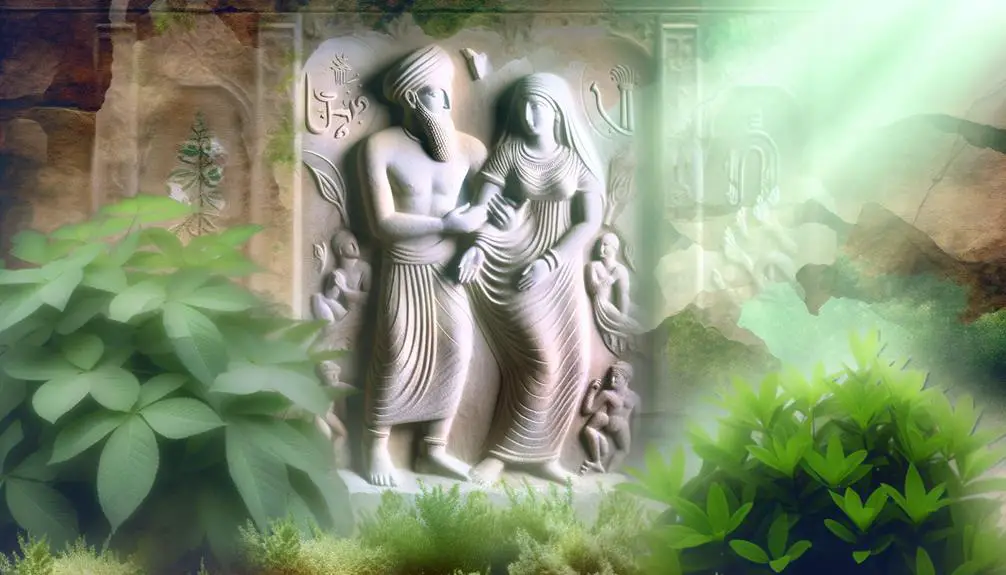
Did God Have a Wife in the Bible
In exploring the notion of God having a wife in the Bible, your attention might turn to Asherah. This figure appears in archaeological findings and textual references that suggest a link to the Israelite deity. While mainstream biblical texts do not explicitly denote Asherah as God's wife, ancillary evidence from ancient inscriptions and artifacts indicates her venerated role alongside the divine. The scholarly community continues to debate her significance, reflecting a tension between historical polytheistic practices and later-established monotheistic views. For a deeper understanding, engaging further with these findings reveals layers of ancient religious syncretism and theological evolution.
Key Takeaways
- Ancient texts and artifacts suggest the worship of Asherah, potentially as a consort to the Israelite God.
- Biblical references to Asherah are scarce but imply her presence in early Israelite religion.
- Inscriptions and figurines unearthed in archaeological sites indicate veneration of a goddess alongside Yahweh.
- Scholarly debates continue over the interpretation of Asherah's role and her relationship with Yahweh.
- The notion of God having a wife challenges traditional monotheistic views and suggests earlier polytheistic practices.
Historical Context and Inquiry
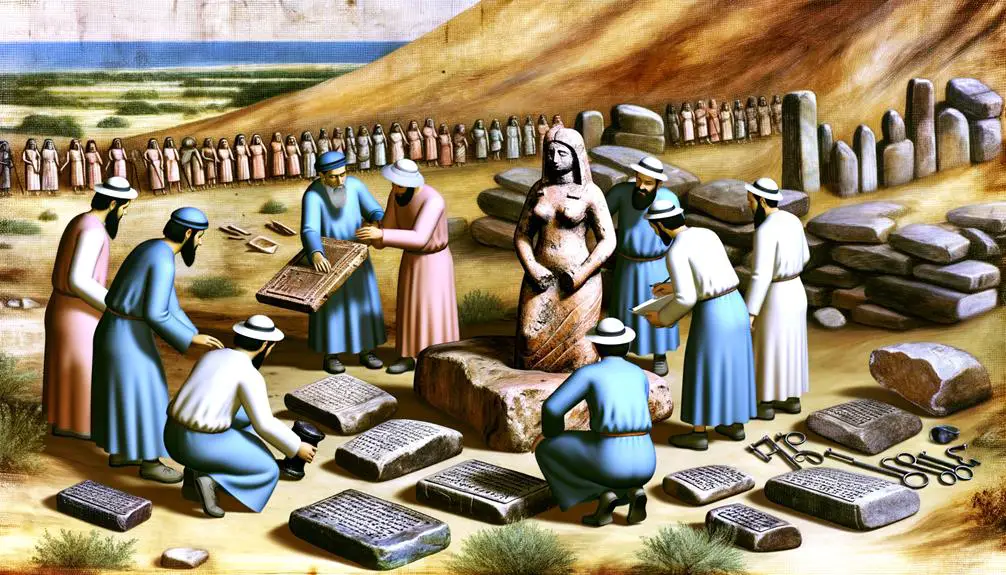
Throughout history, scholars have debated the existence and role of a divine consort in ancient Israelite religion, exploring critical questions about the portrayal of God's wife in biblical texts. You might find the concept puzzling, yet it's rooted in a broader discussion about religious syncretism and divine polytheism, prevalent themes in ancient Near Eastern cultures.
In your investigation, you would observe that ancient Israel, much like its neighbors, was influenced by surrounding polytheistic practices. This influence likely seeped into early monotheistic worship, indicating a period when Yahweh might not have been worshipped solely. Scholars propose that traces of a divine consort, possibly Asherah, appear subtly interwoven in certain biblical narratives and iconography, suggestive of religious syncretism—a blending of religious beliefs and practices.
This conjecture challenges traditional monotheistic views but is crucial in understanding the fluidity of ancient religious identities. Divine polytheism in Israel's context doesn't just speak to a pantheon of gods but also to the theological and cultural exchanges that shaped early religious expressions. As you explore further, you'll appreciate how these elements underscore the complex, evolving nature of faith and identity in ancient Israel, far from the static portrayal often assumed.
Archaeological Discoveries
As you investigate the domain of archaeological discoveries, ponder how ancient figurines and relics contribute to our understanding of divine representations in biblical times. Inscriptions naming Asherah alongside Yahweh provide critical insights into the religious dynamics of ancient Israel. Analyzing temple artifacts further elucidates the roles and reverence of deities depicted in these sacred spaces.
Ancient Figurines and Relics
Numerous ancient figurines and relics have been unearthed, providing tangible evidence of the worship of a divine consort in the biblical era. You'll find that these artifacts, often crafted using sophisticated ceramic techniques, offer a window into the religious practices and beliefs of those times. The preservation methods applied to these relics have allowed archaeologists to analyze the minutiae of their construction and the symbols they bear. These ceramic figures, frequently depicting female deities, suggest a veneration of feminine divine figures, possibly linking to the worship of Asherah alongside Yahweh. This analysis helps you understand the complexity of ancient religious practices, revealing a layer of spiritual life that included female deities, contrary to the later monotheistic narratives.
Inscriptions Naming Asherah
Archaeological digs have uncovered inscriptions that explicitly name Asherah, shedding light on her role and recognition in ancient religious contexts. These findings suggest a complex narrative of divine femininity and religious symbolism, where you see Asherah not merely as a mythical figure but as an integral part of spiritual life.
Location |
Inscription Context |
Emotional Impact |
|---|---|---|
Kuntillet Ajrud |
"Blessed be X by Yahweh and his Asherah" |
Inspires awe at shared worship |
Khirbet el-Qom |
"Uriyahu the prince wrote it, blessed be Uriyahu by Yahweh and his Asherah" |
Evokes wonder in divine partnership |
Deir Alla |
"I have blessed you by Yahweh of Samaria and his Asherah" |
Stirs curiosity about religious practices |
Tel Migne |
"To Yahweh and his Asherah, this votive" |
Highlights the reverence for Asherah |
These inscriptions affirm Asherah's presence, illustrating the evolving perceptions of divinity in ancient societies.
Temple Artifacts Analysis
Temple artifacts reveal that Asherah was venerated not only in inscriptions but also through tangible representations in sacred spaces. The excavation and artifact restoration processes have unearthed figures and reliefs depicting her, highlighting her ceremonial significance within the religious practices of the time. These artifacts, often found in ancient Near Eastern temples, provide concrete evidence of her worship. You'll notice that through careful analysis, scholars have determined the symbolic meanings embedded in these artifacts. The presence of these items in religious precincts suggests that Asherah's role was both prominent and officially sanctioned in some circles. This analysis supports the hypothesis that Asherah was considered a deity, possibly paralleling or complementing the male deities in ancient Semitic religion.
The Goddess Asherah
How has the figure of Asherah, often identified as God's wife in ancient texts, been interpreted in biblical scholarship? The inquiry into Asherah's role opens a complex discussion about divine femininity and its expression within ancient Near Eastern religions. Scholars have scrutinized the ambiguous nature of her depiction, oscillating between a household deity and a national goddess. This duality reflects broader themes of divine femininity, where Asherah sometimes embodies nurturing and protective qualities, while at other times, she is seen as a powerful, sovereign entity.
Ritual practices associated with Asherah further illuminate her significance in religious life. Despite the paucity of direct biblical references, archaeological findings suggest that her worship involved both formal temple rites and domestic rituals, indicating her pervasive influence. These practices, often integrating symbols like the Asherah pole, reveal a societal acceptance of her worship alongside Yahweh, albeit contested by certain biblical texts.
The scholarly journey to understand Asherah's place in biblical history challenges the traditional monotheistic narrative, suggesting a more pluralistic past within ancient Israelite religion. This more nuanced understanding of Asherah provides insight into the dynamic and sometimes contentious relationship between official religious practices and popular devotion in ancient societies.
Textual Evidence in Scriptures
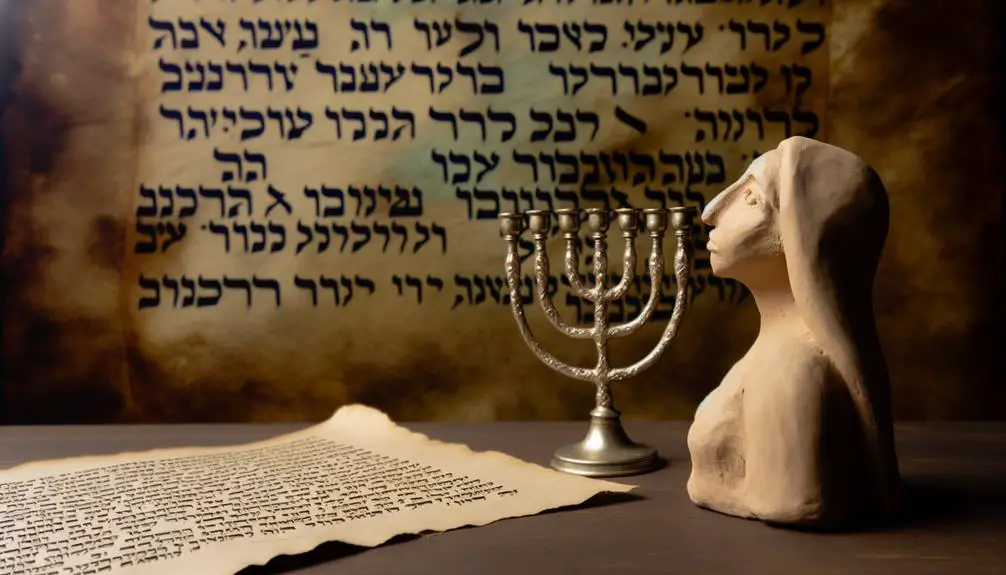
As you explore the textual evidence in scriptures, you'll find that references to Asherah appear in various ancient texts, suggesting her significant role in early religious contexts. Scholars have debated these mentions, considering whether they reflect a consort to God or a distinct deity within a polytheistic framework. Each interpretation offers a unique lens through which to view the theological landscape of the ancient Near East.
Asherah's Mention in Texts
Several ancient texts provide evidence of Asherah's role and recognition within the religious contexts of the time. These references aren't just exploring mentions; they investigate her divine associations and the ritual practices dedicated to her. You'll find her presence in various forms, hinting at a complexity that goes beyond a mere consort or secondary figure.
- Ugaritic Texts: Describe Asherah alongside El, suggesting a consort relationship and possibly a motherly figure to other gods.
- Canaanite Inscriptions: Indicate temples dedicated to Asherah, highlighting her importance in public and religious life.
- Biblical References: Though sparse and often edited, some passages suggest practices and artifacts related to Asherah worship.
- Archaeological Findings: Artifacts such as figurines and inscriptions provide physical evidence of her veneration.
Engaging with these sources provides a nuanced view of her role in ancient Near Eastern religions.
Biblical Interpretations Explored
Turning now to the biblical texts, you'll discover that interpretations regarding Asherah's presence offer a spectrum of insights into her role and significance. The Scriptural ambiguity surrounding her character is pivotal in understanding the historical and theological context of divine femininity.
Here's a succinct look at key verses and their interpretations:
Verse |
Interpretation |
|---|---|
Deuteronomy 12:3 |
Commands to destroy Asherah poles suggest her worship was widespread. |
Judges 6:25-30 |
Gideon's destruction of an altar to Baal and Asherah pole hints at her significance in Canaanite religion. |
1 Kings 18:19 |
Mention of 400 prophets of Asherah attending Jezebel underscores royal endorsement. |
2 Kings 23:4 |
Josiah's reforms include removal of Asherah from the temple, indicating her integration into official worship. |
Jeremiah 17:2 |
Children remember their altars to Asherah; signifies enduring worship despite reforms. |
This table reflects the complex layers of Asherah's narrative within scriptural texts.
Interpretations by Scholars
Scholars have widely debated the presence and role of a divine consort in ancient Hebrew religion. You'll find that theological debates often hinge on interpretations of ancient texts and archaeological findings, where the notion of God's consort surfaces intermittently. Despite these debates, a scholarly consensus hasn't been fully established, reflecting the complexity and variability of ancient religious practices.
To understand the diversity of scholarly opinions, consider these key points:
- Textual Evidence: Researchers scrutinize ancient texts that mention figures like Asherah alongside Yahweh, suggesting a partnership or consort status in early worship practices.
- Archaeological Discoveries: Artifacts such as figurines and inscriptions have been interpreted by some as evidence of a female deity worshiped in conjunction with Yahweh.
- Cultural Context: Understanding the syncretism in ancient Near Eastern religions helps scholars gauge how deities from different pantheons could be integrated or identified with each other.
- Theological Impact: Scholars analyze how the inclusion of a consort would affect the theological structure of early Jewish monotheism, which officially denies any divine partnership.
Each of these points adds layers to your understanding, inviting you to appreciate the nuanced discussions that shape our views of ancient religious history.
Implications for Monotheism
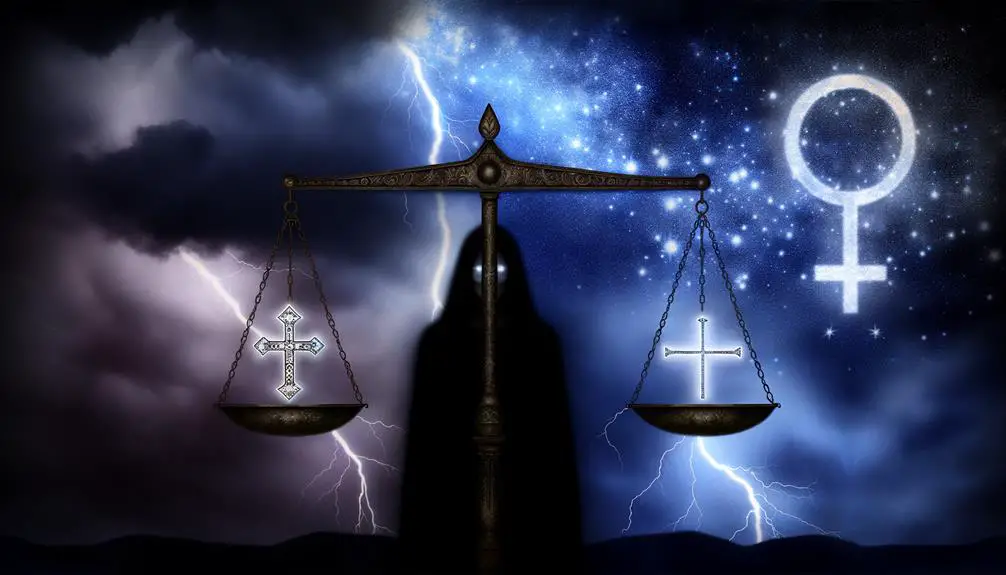
How does the idea of a divine consort challenge the traditional views of monotheism in ancient Jewish theology? The concept introduces a form of divine plurality that seems at odds with strict monotheistic doctrine. It suggests that the early stages of Jewish monotheism might not have been as uniformly singular as later texts and theological interpretations insist.
This notion of a divine consort like Asherah alongside Yahweh implies a more complex divine hierarchy, potentially indicative of a monotheistic progression from earlier polytheistic beliefs. Such evolution could reveal a transitional phase where monotheistic ideas gradually dominated, reformulating or suppressing earlier polytheistic elements.
Here's a structured way to visualize the implications:
Aspect |
Monotheism Impact |
Divine Plurality Evidence |
|---|---|---|
Theological Unity |
Challenges the singularity of God |
Suggests a pantheon or duo |
Scriptural Interpretation |
Questions literal interpretations |
Encourages re-evaluations of ancient texts |
Developmental Trajectory |
Indicates a phased monotheistic evolution |
Supports theories of religious adaptation |
Understanding these aspects helps clarify how the integration or acknowledgment of a divine consort in ancient texts could reshape our understanding of monotheism's historical and theological development.
Cultural Impact and Worship
The cultural impact and worship practices involving a divine consort reshape our understanding of societal and religious dynamics in ancient times. Religious syncretism, a common feature of ancient Near Eastern religions, was likely influenced by various cultures and their deities merging. This synthesis can be seen in the integration of female divine figures into the mainly male pantheons, suggesting a more gender-balanced view of divinity in some cultures.
Feminist theology has greatly benefited from the exploration of these divine consorts, offering a broader perspective on spirituality and leadership roles within ancient religions. It asserts that recognizing female divinities reflects a society's valuation of women and their roles. Here are some key considerations:
- Integration into Rituals: Female deities were often central to fertility and agricultural ceremonies, highlighting their essential role in societal sustenance.
- Iconography and Symbols: The depiction of these goddesses in art and symbols provides insight into their revered status and the attributes considered divine.
- Textual References: Ancient texts that mention goddesses alongside gods indicate their importance in religious narratives and doctrines.
- Archaeological Evidence: Artifacts such as statues, inscriptions, and temple remnants point to widespread worship and the cultural prominence of female deities.
Understanding these elements helps you appreciate the complex fabric of ancient religious practices and their lasting impact on contemporary religious thought.
Comparative Mythology Insights

Exploring comparative mythology offers insights into how different cultures perceive divine consorts, highlighting similarities and variances in their roles and attributes. You'll find that mythological parallels between cultures often reveal a shared thematic of divine partnerships, which sometimes leads to deity syncretism—a blending of gods and goddesses from different traditions. For example, the ancient Near Eastern goddess Asherah, who is sometimes considered to be God's wife in the Hebrew Bible, shows similarities to other mother goddesses like Cybele from Phrygia or Gaia from Greek mythology. These figures often embody earth and fertility, central to agricultural societies.
As you investigate further, you'll notice that the roles of these divine consorts are not only important but are essential for the theological balance within their respective mythologies. They often hold autonomous powers over specific domains such as fertility, war, or wisdom, challenging the notion that they are subordinate. This insight helps to understand the potentially significant role a divine consort like Asherah could have played in early Israelite religion, prior to the monotheistic shifts reflected in later textual traditions.
Such comparisons not only enhance our understanding of individual mythologies but also how cultures interact and influence each other's religious constructs, shaping a more interconnected ancient world.
Modern Theological Perspectives
In modern theological discourse, scholars often debate the implications of divine consorts like Asherah within monotheistic frameworks. You might find it intriguing that these discussions don't just revolve around historical or archeological concerns but explore deeply into the theological implications for contemporary faith practices.
- Reinterpretation of Sacred Texts: Scholars analyze texts to understand how references to divine consorts might have been suppressed or reinterpreted in the light of evolving monotheistic doctrines.
- Divine Femininity: There's an emerging focus on the role of feminine divine figures, which challenges traditional gender roles in theology and promotes a more inclusive understanding of the divine.
- Impact on Worship Practices: Understanding the historical context of divine consorts influences modern worship practices, encouraging a broader, more inclusive range of expressions in worship.
- Theological Debates: Debates continue about how these findings impact the understanding of God in monotheistic religions, particularly regarding the nature of divinity and its expression.
These considerations are vital as they not only reshape historical understanding but also influence contemporary religious thought and practice. By exploring these themes, you're immersing yourself in a complex interplay of history, theology, and belief that challenges and enriches the modern spiritual landscape.
Frequently Asked Questions
How Do Contemporary Religions View the Concept of God Having a Wife?
In contemporary religions, the idea of God having a spouse is largely absent. Theological implications and interfaith dialogues focus on monotheistic views, emphasizing a singular, divine entity without marital associations.
Are There Any Major Films or Books Inspired by This Idea?
Ever wondered how cultural narratives shape art? Several major films and books draw on the idea, showcasing diverse artistic interpretations influenced by ancient myths and cultural influences, though not directly referencing biblical contexts.
How Do Different Jewish Denominations Address This Topic?
Different Jewish denominations vary in their approach, considering archaeological evidence and theological implications critically. You'll find Orthodox groups generally dismissive, while Reform Judaism may engage more openly with these speculative historical interpretations.
What Are Common Misconceptions About God's Wife in Popular Culture?
In popular culture, 80% misunderstand the concept of God's wife, often confusing divine feminism with mythical interpretations. It's important to differentiate scholarly analysis from fictional representations to grasp these theological nuances accurately.
How Do Children's Religious Education Classes Handle This Subject?
In children's religious education classes, curriculum adaptation often involves thoughtful consideration of parental involvement to guarantee sensitive handling of complex theological topics, maintaining a balanced and age-appropriate learning environment for all students.


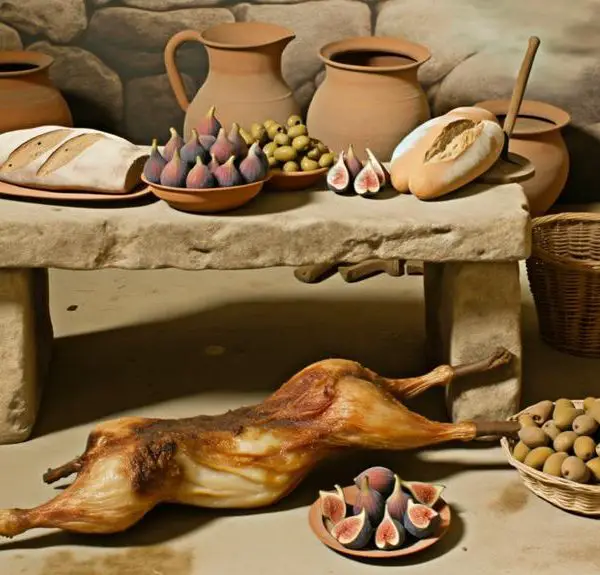
Sign up